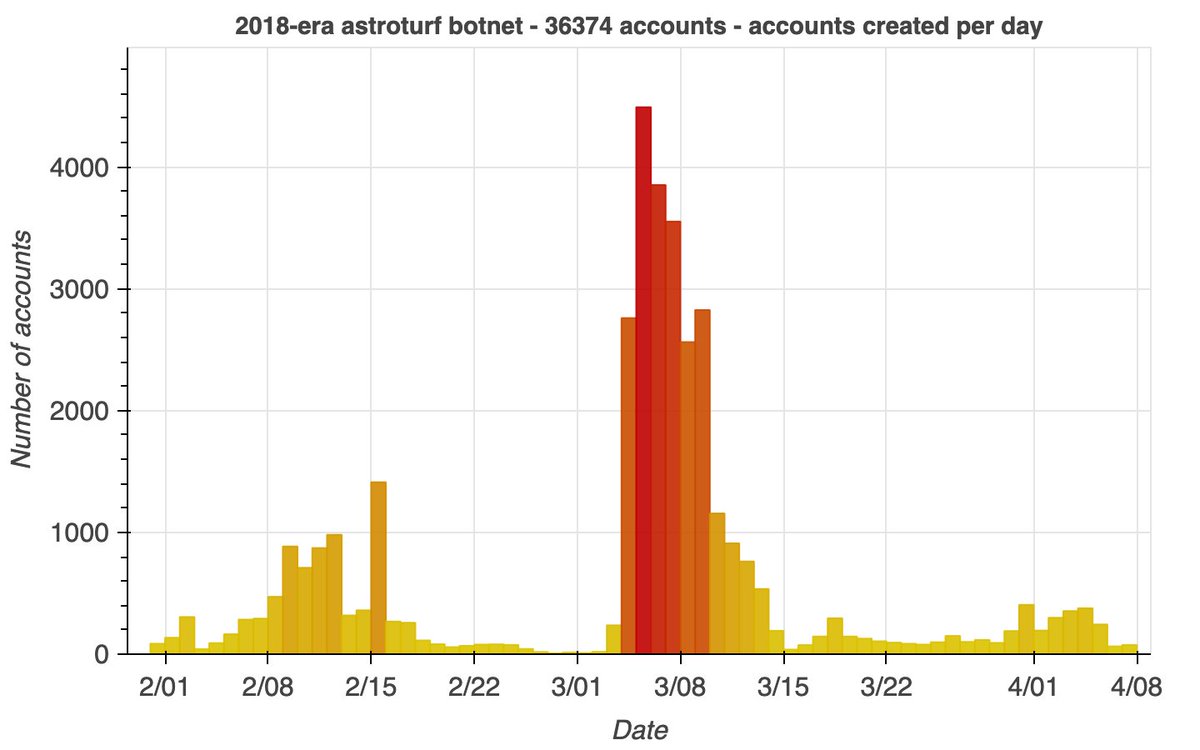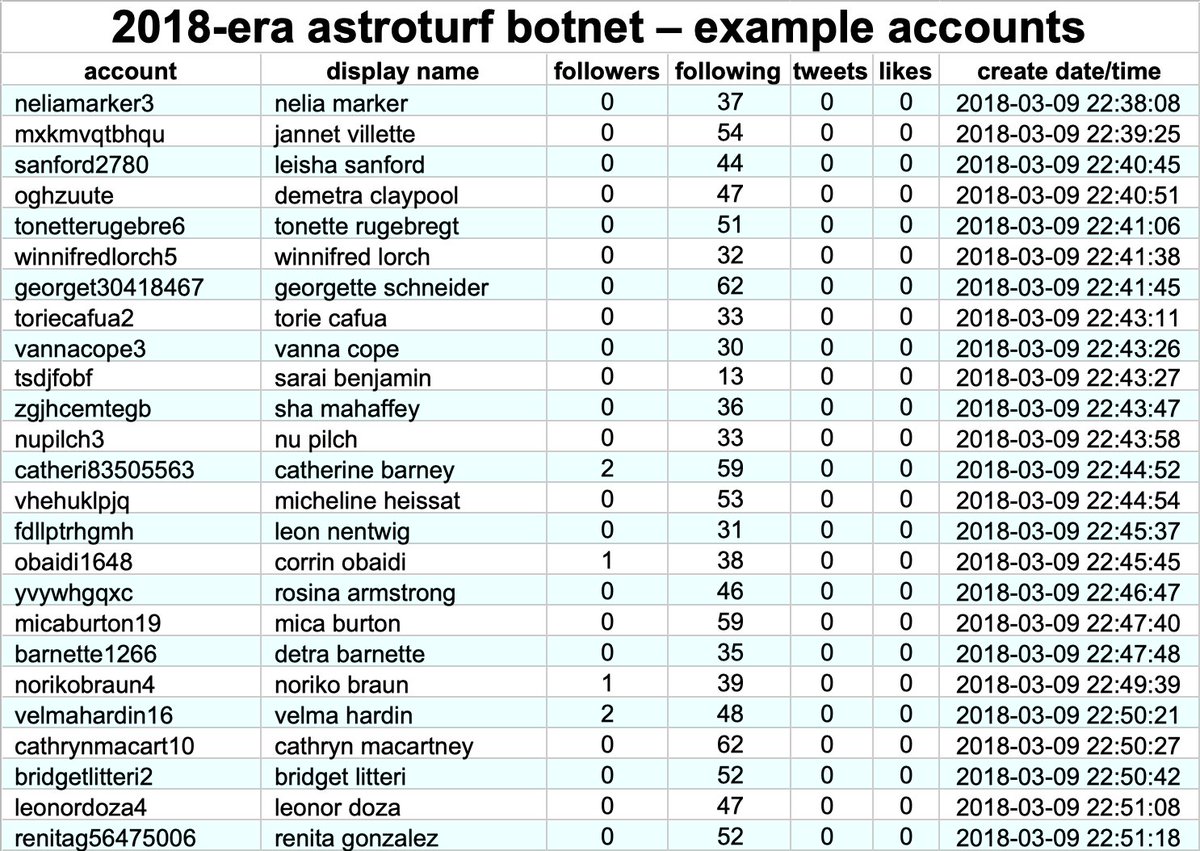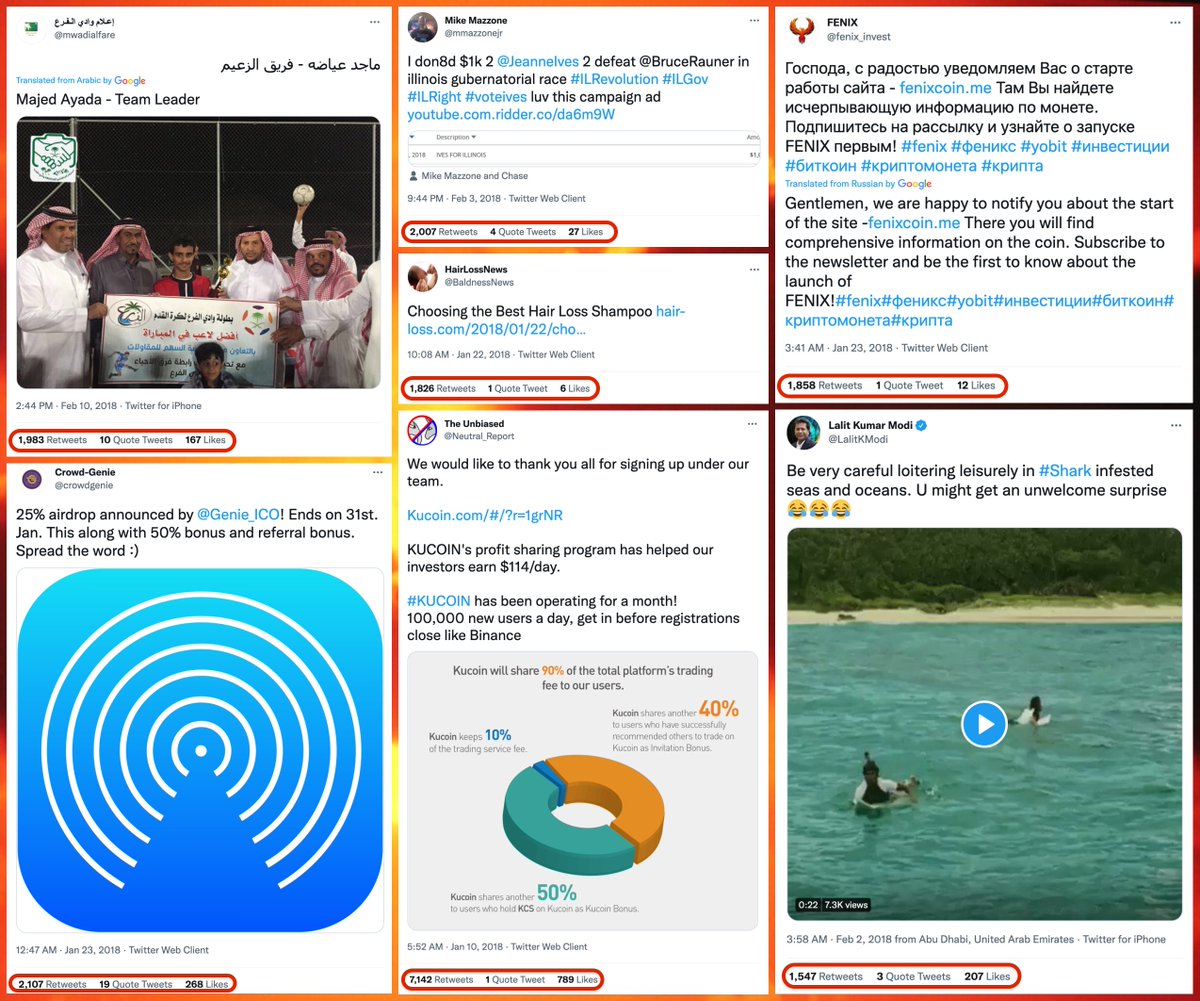As it turns out, this is not @TheTexianDM's first encounter with an astroturf botnet. Here's a thread on an old botnet from which @TheTexianDM got a couple hundred retweets each on a set of #Texit tweets and about 3000 fake followers back in 2018.
cc: @ZellaQuixote

cc: @ZellaQuixote
https://twitter.com/conspirator0/status/1457049273971916802


This network consists of 36374 now-dormant accounts created in early 2018. Almost all of the accounts in the network either retweet or follow accounts; very few do both. All have either 0 tweets/0 likes or fewer likes than tweets. 





None of the accounts in this network has been active since 2018. Back then they tweeted (allegedly) via a mix of the Twitter Web Client and Twitter for Android (iPhone is entirely absent). 

Almost all of this botnet's content is retweets, and since the accounts generally retweeted without liking, a lot of the tweets amplified by the network wound up with far more retweets than likes. 





This botnet retweeted and followed a wide variety of accounts back when it was active, although the majority of them are accounts that promote someone or a something (a product, service, politician etc) rather than personal accounts. 



Here's a slideshow of follow order by creation date scatter plots for several of the accounts followed by the botnet. The bulk-created followers from the botnet show up as horizontal streaks (highlighted in red to make them easier to see).
(Thread on follow order by creation date scatter plots, including Python code for generating them)
https://twitter.com/conspirator0/status/1408589182944124934
• • •
Missing some Tweet in this thread? You can try to
force a refresh































